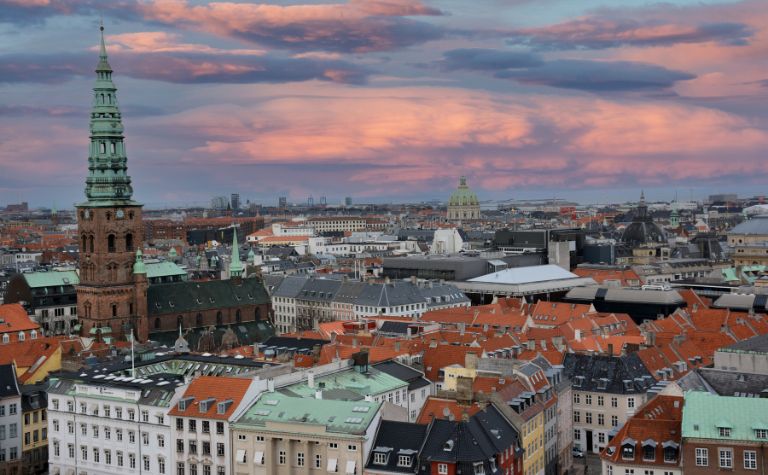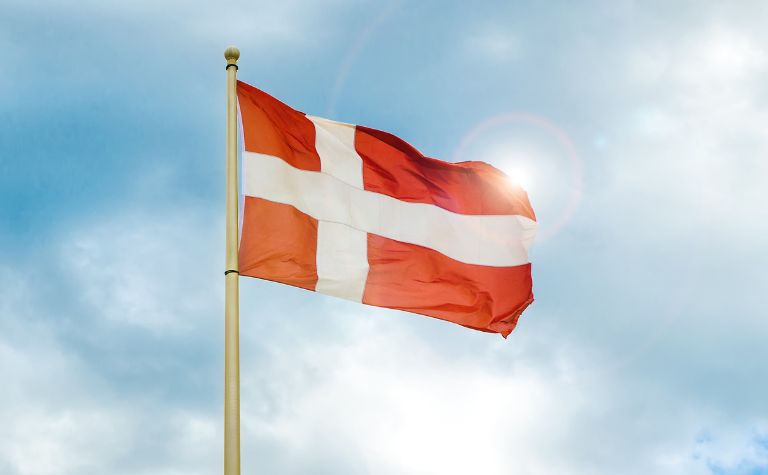Danishes are a popular type of pastry in the USA, particularly during breakfast time. One can’t help but relish the flaky texture and sweet filling, especially those who have natural affinities for baked goods.
Since danishes are so popular in the states, it’s only natural to inquire if they enjoy the same popularity in other places, such as in Denmark among the Danish people.
Danish people do like danishes. In Denmark, this type of pastry is called wienerbrød, meaning Viennese bread, as it was introduced to Denmark by Viennese bakers. It comes in many different variations and looks much different than in America.
This article will explore the popularity of danishes in Denmark, with a brief overview of their history. It will also discuss the differences between Danish pastries in Denmark and the USA.
Also, see What Is Denmark Known For? to learn more.

Brief History of Danishes
Even though danishes are known as Danish pastries all around the world, they have their roots in Austria.
This is why this type of pastry is not referred to as “Danish” in Denmark and the other two Scandinavian countries.
However, this might be a bit too humble on their part.
While the techniques were imported from Austria, the Danes put their own twist on the pastry, creating many different versions and making it their own.
So, how did Austrian pastry end up in Denmark and then spread around the world, allowing everyone to enjoy the tasty, flaky goodness?
Origin Stories
Wienerbrød has two origin stories, both of which might easily be true. [1]
The first one, which is more common, tells the story of a bakers’ strike in the middle of the 19th century.
To combat the loss of workforce, bakery owners imported many foreign workers, including Austrian bakers.
Those Austrians brought their flaky, layered, buttery pastry to Denmark.
Danes apparently loved it and adopted it, adding different ingredients, and making it their specialty.
Another story tells of a baker from the Danish court who traveled to Austria to get new ideas.
He picked up their pastry style and later modified it with a sugary filling.
The result was loved, and the pastry became quite popular in the country.
Either way, the pastry has its roots in Vienna, and those roots are still obvious in the name Danes use for it. Despite the name, it can be legitimately seen as a Danish pastry.
Spreading Around the World
In the early 20th century, many Danes migrated to America and brought their beloved pastry with them.
A man called Lauritz C. Klitteng invested a lot of effort in promoting the pastry in the USA.
He even made some Danish pastry for President Woodrow Wilson’s wedding. [2]
He later toured the world to promote his style of Danish pastry and appeared in many baking magazines.
Eventually, he was hired by Herman Gertner to make danishes for his restaurant, which turned out to be a smart business move since the pastry was well-accepted by the customers.
Danishes slowly spread around the world and are eaten in most countries in endless variations. Those variations are often drastically different from what might be found in Denmark.
For example, Danishes are savory in some countries, filled with deli meats and cheese.
Also, see What Is There To Do In Denmark? to learn more.

How Do Danes Eat Danishes?
As can be expected, Danish people are big fans of danishes.
There are bakeries everywhere, offering many different types of wienerbrød one can try.
Since there are so many different options, it is impossible not to find a great piece of wienerbrød.
Apart from filling their danishes differently, Danes also eat danishes in a different way from Americans.
In America, Danishes are a common breakfast food since breakfast is typically sweet there.
On the other hand, Danes often eat danishes at kaffetid or coffee time.
Danishes go really well with coffee, so they are a great snack to have while drinking coffee. Some danishes can even be dunked into coffee for a special treat. [3]
Danes also eat danishes for brunch, especially on the weekend, when they want to have a bigger meal and unwind.
It’s also common to eat danishes with family during holidays, and people sometimes bring them to work as a treat for their colleagues on special occasions.
Even though there are no statistics on how many danishes a Dane eats in a year, it’s obvious that this style of pastry is very popular among Danes.
A tourist will find danishes very easily and they’ll likely be surprised by all the variations and differences between the real danishes and what is offered in other countries.
Also, see Is Denmark Socialist? to learn more.

Wienerbrød Variations
In America, the typical Danish pastry is round with a jam or custard filling and sometimes white icing.
When danishes are mentioned, this is the typical image that might pop into somebody’s mind.
However, things are a bit more complicated in Denmark, as wienerbrød comes in wide variations, each of which has a different name.
The basic idea behind each type of wienerbrød is similar.
It’s always a leavened, fermented, flaky pastry with lots of butter between the multiple layers of pastry. [4]
Today, it’s often made with margarine since it’s cheaper, but high-quality wienerbrød requires butter.
Many different variations have been developed based on this recipe.
There are danishes with different fillings and different shapes and sizes, so all tastes and party sizes can be catered to.
An iconic type of danish is spandauer, which is round and comes with a yellow custard.
Snegle, or snails, are another popular round variation of danishes, coming in different heights and sizes.
Snegle typically comes with cinnamon and icing, while some sub-variations, like direktørsnegl, come with chocolate instead of cinnamon.
A popular variation that is not round is tebirkes, which are cut into small rectangular pieces.
They are filled with remonce, a sweet paste made from butter and sugar, to which marzipan or almond paste may be added. [5]
Sometimes, Danes will make a large-format wienerbrød that is shared with family and friends.
An example of this is kannelstang, which is usually cut into pieces and shared by a group of people.
Conclusion
Danishes are popular in Denmark. Danish people eat them often and make many variations, which are different from the danishes in America.
Also, see How Much Does It Cost To Live In Denmark? to learn more.
References:
[1] Source
[2] Source
[3] Source
[4] Source
[5] Source
